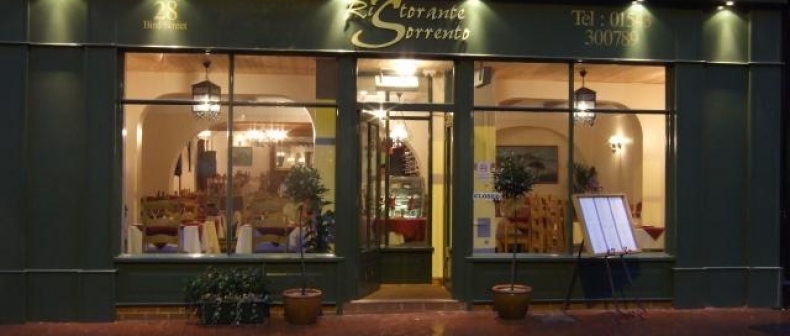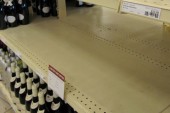
Image: Flickr
I’ve spent a lot of time traveling and looking for restaurant in cities I’m not familiar with. Naturally, I’m always looking for places that are more serious about wine than the average. But barring a trustworthy recommendation, it’s not always easy to know. Over the years, I’ve learned to spot a few signs that reveal, even from a brief 20-second walk-by, where I’m likely to have a good wine experience and where I’m not.
The Positive Signs:
Stop in here if you see:
1. High quality, polished glassware set up on the table
Have a quick glance at the place settings; quality, highly polished glassware is one of the most conspicuous and obvious signs that a restaurant cares about wine. The investment in proper stemware — relatively large bowl with tapered, (un-rolled) rim, tall and elegant — is significant, so they must be making a serious effort.
2. The wine list, or part of it, is posted outside with the menu
This means that they’re proud enough of their list to display it publicly, and want to use it to draw in patrons (a pathetic list of four generic selections would have the opposite effect). It can also mean that the pricing is fair, put out there for everyone to see and compare and price check with their iPhone or BlackBerry on the spot.
3. Someone’s name is on the wine list
An addition to #2, and an even better sign, is if you see the name of the sommelier/wine director on the wine list posted outside. Sommeliers, like fine glassware, cost money. So a restaurant that’s willing to incur the extra expense is obviously serious about wine, and has made it a key part of the overall food and beverage strategy. The name not only indicates pride, but also accountability, a powerful motivator.
4. Prominent visual displays of wine
It’s Sales Psychology 101: if they see it, they will buy it. Visible wine bottles in some form of shelving, racking, bins, wine cabinets or a glassed-in ‘show’ cellar, or large format bottles (magnums, double magnums and larger) in a conspicuous location like on the bar, for example, all serve to increase sales. If the restaurateur is that smart, than likely there’s been effort in filling the cellar with appropriate bottles, too.
5. Care about storage and preservation
Similar to #4, the sight of a temperature controlled wine fridge (or cellar) and/or a wine preservation/dispensing unit (that keeps open wine in top shape), is a brilliant sign.
6. Menus that suggest wines with each dish
A food menu that lists suggested wine pairings takes extra time and effort. Since nobody in the restaurant business has spare time, they must care a lot, and as soon as there’s care invested, quality of the selections goes up. It’s the sort of added touch that only wine-savvy restaurants would do.
The danger signs: if you see the following, just walk-on by:
1. Plastic laminated wine menus
It’s the kiss of death. I appreciate the expense of re-printing menus, and nobody likes to find the sticky rib sauce from the previous dinner on the list. But to me it’s a sign of full capitulation: no intention of bringing any love onto the list any time soon.
2. There are no vintages listed on the wine list
It’s a pathetic strategy to avoid the pain of re-printing the list. The vintage — the year in which the grapes were grown — is of major importance in the world of wine. A restaurant that doesn’t list vintages along with the name of the wine either doesn’t care about the variations in style and flavor profile from year to year, or more likely, has opted to list a bunch of cookie-cutter style brands that are designed in a boardroom and which probably don’t change much anyway. In any case, avoid.
3. Prominent alcohol manufacturers’ advertising
When you see branded menu covers, flashing neon signs, or branded table tent cards advertising wine, this means they’ve sold out. Free umbrellas come with a quid pro quo: we give you this, you give us that. Whoever it is has only one agenda: to sell more of their brands. It has nothing to do with quality or suitability or food compatibility. With all else equal, a place that has turned over their program to an advertiser is not where I’d go for a great wine experience.
Good luck on your next quest.
—–
John Szabo is a master sommelier and wine writer for Toronto Standard. Follow his tweets here: @johnszabo.
More recommendations by John Szabo at www.johnswines.com
For more, follow us on Twitter @TorontoStandard and subscribe to our newsletter.














